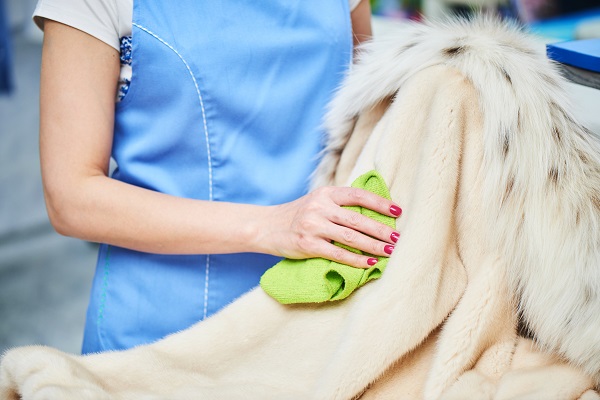Everything about Dry Cleaning Services- Ins & Outs
When we were young, we would believe dry cleaners is something very sophisticated task. There was a type of starched romantic commotions with our laundry services in London to the mannerism our shirts would swift through the conveyor, perform that flimsy flutter of pinstripes and plaids. It would be like a Narnia-like window authentically wrapped in plastic, giving a feeling of glamour and ease. I realized later that dry cleaning is nothing but the cleaning process, and to pay from my pocket to get rid of the smell of stale cigarettes was not that worthy. I would regret later that what I would wear on that date was nothing but a mere scam.
Dry cleaning is a regular aspect of our life. We utilize dry cleaning services in London to get our clothes cleaned, as fabric in the same gets destroyed due to the use of washing machine.
At home, the washing objective of an alkali is to saponify oils and remove dirt and materials from clothes. Generally, the soapy agent keeps the dirt in suspension during the wash cycle. It is then rinsed during the rinsing cycle and centrifugal spin. The clothes are dried either by hanging the clothes in clothesline or by dropping them in a dryer heated with gas or electricity.
Let us get acquainted with the dry cleaning process
The dry cleaning process involves cleaning clothes with the cleaning liquid. As water is not used and this is a reason why the process is known as dry. In today's article, we would look at what goes on behind the dry cleaning process, and how the dry cleaning process started.
What is the history behind Dry Cleaning?
First, let us get acquainted with its interesting historical past. How does the concept of dry cleaning start? Like many inventions, dry cleaning happened by chance. In 1855, Jean Baptiste Jolly, an owner of French Dry cleaners, notice that his tablecloth became cleaner after his maid accidentally knocked an oil lamp over it. From there on, Jolly got an idea to start a new service known as "dry cleaning". From then on, dry cleaning became a household name.
Earlier dry cleaners would use a variety of solvents, including gasoline and kerosene to clean clothes and fabrics. By the end of the Second World War, professional dry cleaners replaced volatile synthetic solvents like carbon tetrachloride and trichloroethylene with perchloroethylene. The process was not only safe and faster but also best for cleaning. It required less equipment and little floor space. The equipment would get easily installed in retail stores offering excellent quality one-hour service.
With the improvement in technology and innovations, there is now a proliferation of dry cleaning franchises. Clothes are now cleaned quickly and in immense quantity, from the convenient, clean and attractive locations.
The dry cleaning process involves the following steps:
- Labelling: It allows for tracking the garment in different stages.
- Pro-processing tasks: Chemicals are used in the process taking away the hassle of cleaning with hands.
- Detailed cleaning: All the greasy stains are removed.
- After washing: Remaining stains are removed.
- Finishing: Clothes are finally ironed, folded and ready to deliver to the customer.
For many customers, what goes behind the counter, where the imposing machines rumble and steam hisses, is a mystery." We only hand over our bundle of dirty clothes on the counter and get the neat and clean duly folded clothes, but we never know what exactly goes behind the dry cleaning process.
In the process, clothes are tossed on a pile with everyone's else nasty stained clothes, sorted with different fabrics, colours, or stains. Dry cleaners then pre-treat and keep the clothes in a large washing machine that uses solvents instead of water.
The clothes like delicate silk, fine-weave sweaters, and which involve beading or embellishment, need the dry cleaning treatment. You place the clothes in what is known as a giant washing machine, there the clothes are buffered around the drum along with a liquid cleaning solvent that draw out and filter the stain before the rinsing process started. Clothes are then heat-dried at a controlled temperature in the same machine.
It is no doubt that solvents that would be used in the traditional dry cleaning process were awesome perchloroethylene was a great stain remover, it is also termed as a toxic chemical. However, now many dry cleaners have switched over the green cleaning solvents, which are considered less reactive and more environmentally friendly. Many dry cleaners believe that the solvent they use is cleaned, filtered and reused cycle after cycle, so very little escapes into the air or water.
So after dry cleaning services near me, and that's our Nearest Laundry, I will feel my party blouse and cashmere turtleneck has been blasted, pressed, hung beautifully in its sheath. It feels awesome. You will feel mentally relaxed when your professional dry cleaners in London says, " As we take care of your clothes, so you do not have to worry about the same, you can spend your quality time with your family or friends and enjoy your life".



Comments
Post a Comment